You Can Do Bodyweight Exercises
Our world is designed for people to sit. But being sedentary is more detrimental than you might think!
Resting your body on a couch, driver’s seat or office chair for most of your waking hours contributes to poor health. After age 40, muscle loss accelerates at about 5 to 10 percent every decade unless you exercise regularly, states the National Academy of Sports Medicine.
You may know that exercise prevents and reverses much of the damage caused by inactivity. But if you’re like many others, you feel that time constraints, costs, injuries or just a lack of motivation are obstacles too great to overcome. Take heart! You can change your future health, starting now, with no costs, little time and low-impact, healthy exercises in the privacy of your own home that require nothing more than moving your body.
A Home Routine
Here are seven examples of exercises to build muscle and gain functional strength without using any weights:
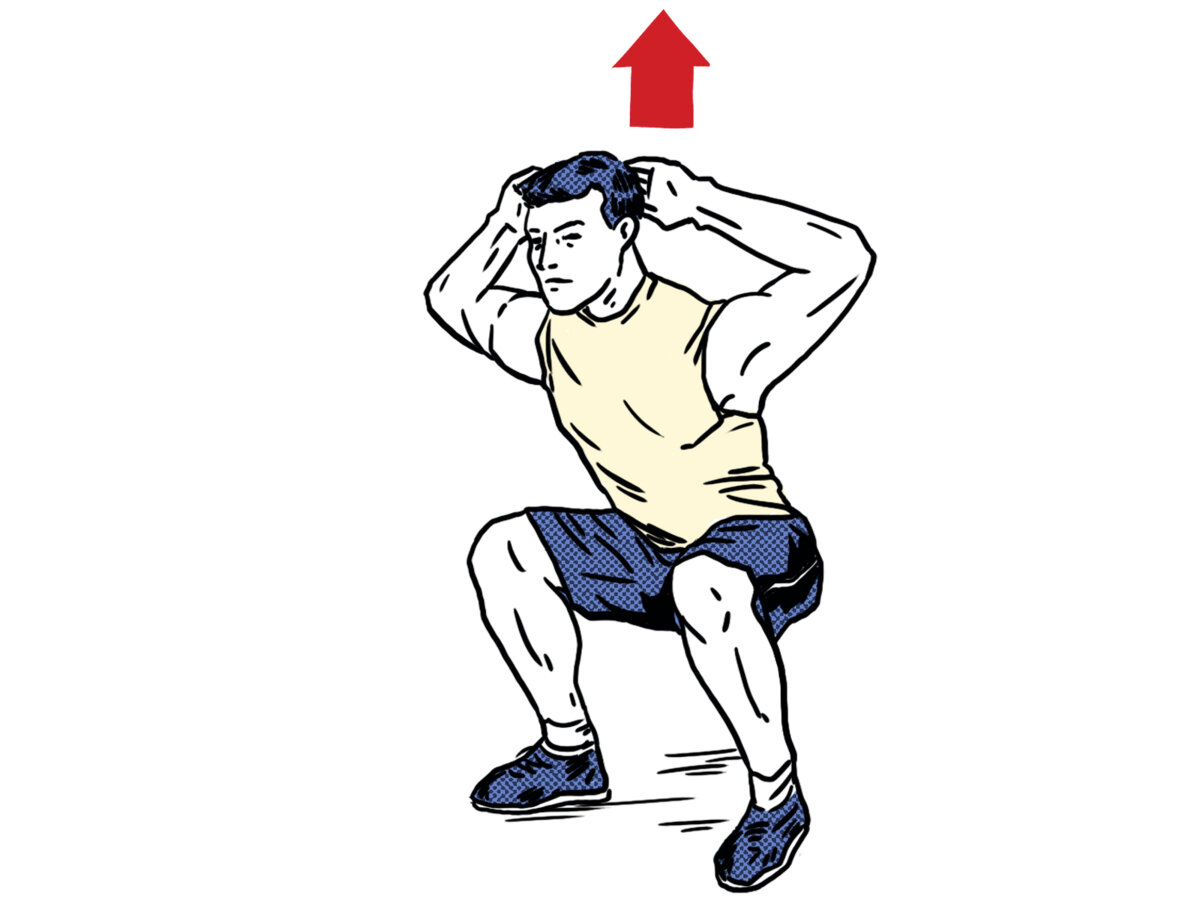
Squat
Stand with your feet shoulder-width apart and slightly turned out. Hinge at your hips, with your back straight, your bottom going back, and your knees bending until your thighs are parallel to the ground. Pause. Drive through your heels to stand back up straight. You can start out by completing this movement while holding the back of a chair with your hands.
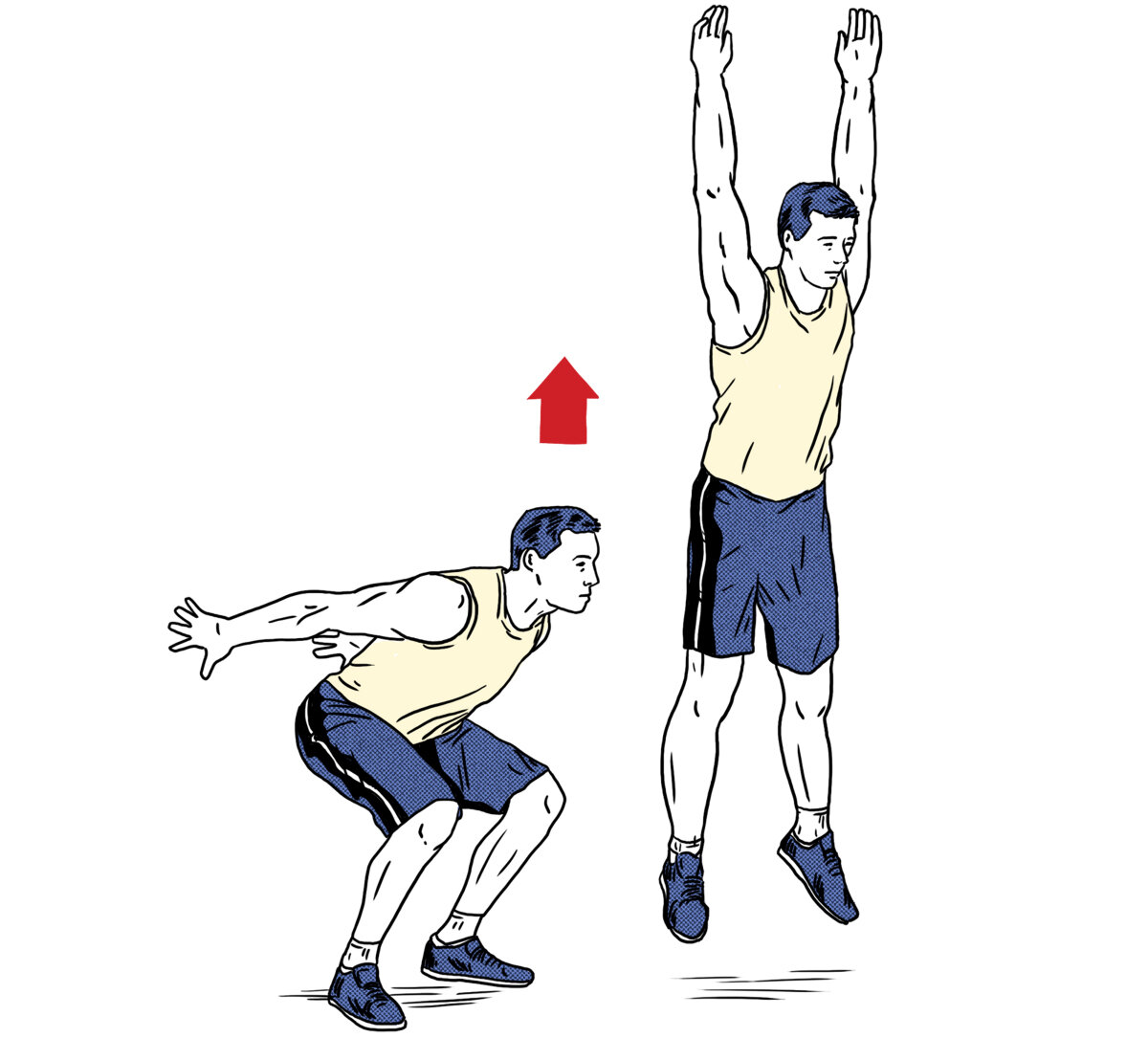
Squat Jump
Squat down a few inches and throw your arms backward. Then jump up and reach your arms overhead. Land softly on your toes, bending your legs to soften the landing.
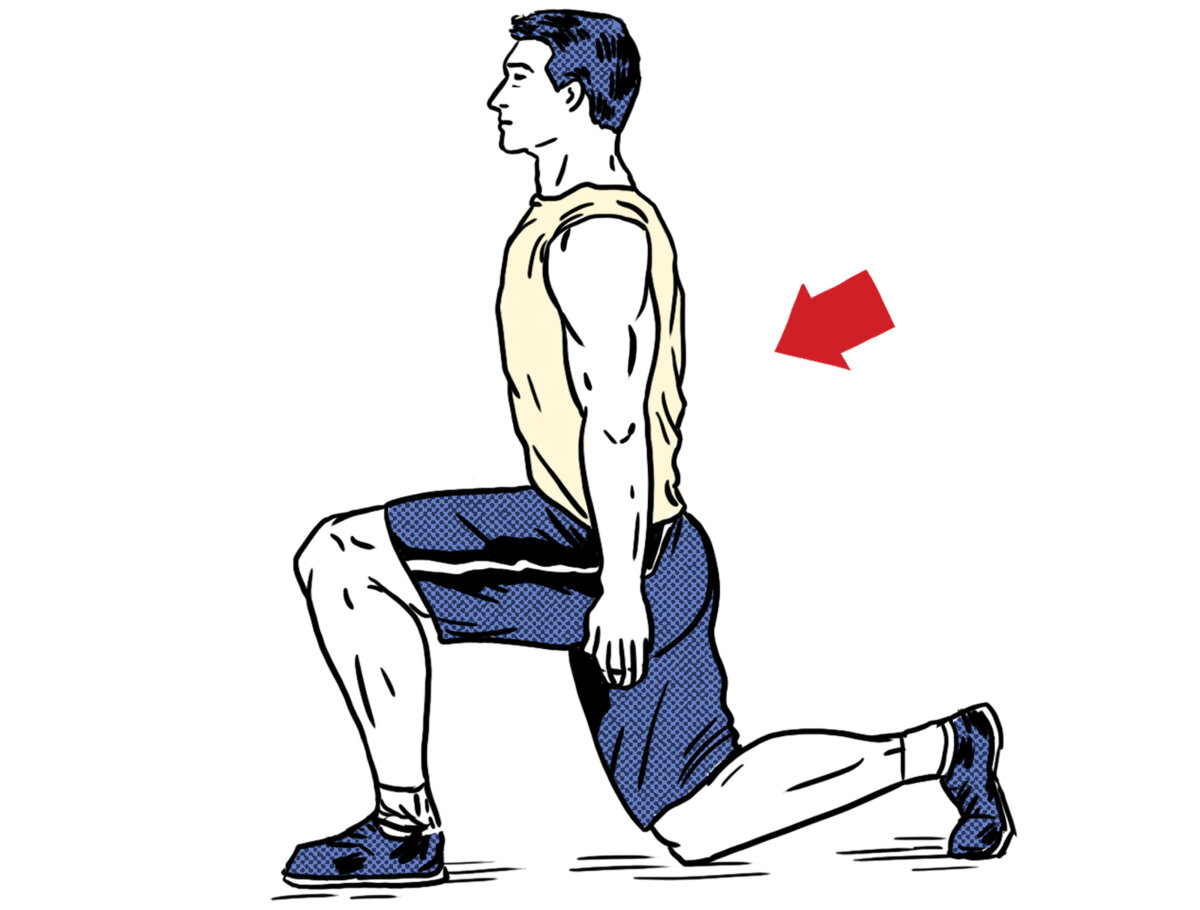
Lunge
Stand straight. Step forward. With your weight on your front leg, lower the knee of your back leg down to within a few inches of the floor, while keeping your upper body upright. Step back to standing position. Repeat with the other leg. You can start out with a table or chair at your side that you can hold with your hand for balance.
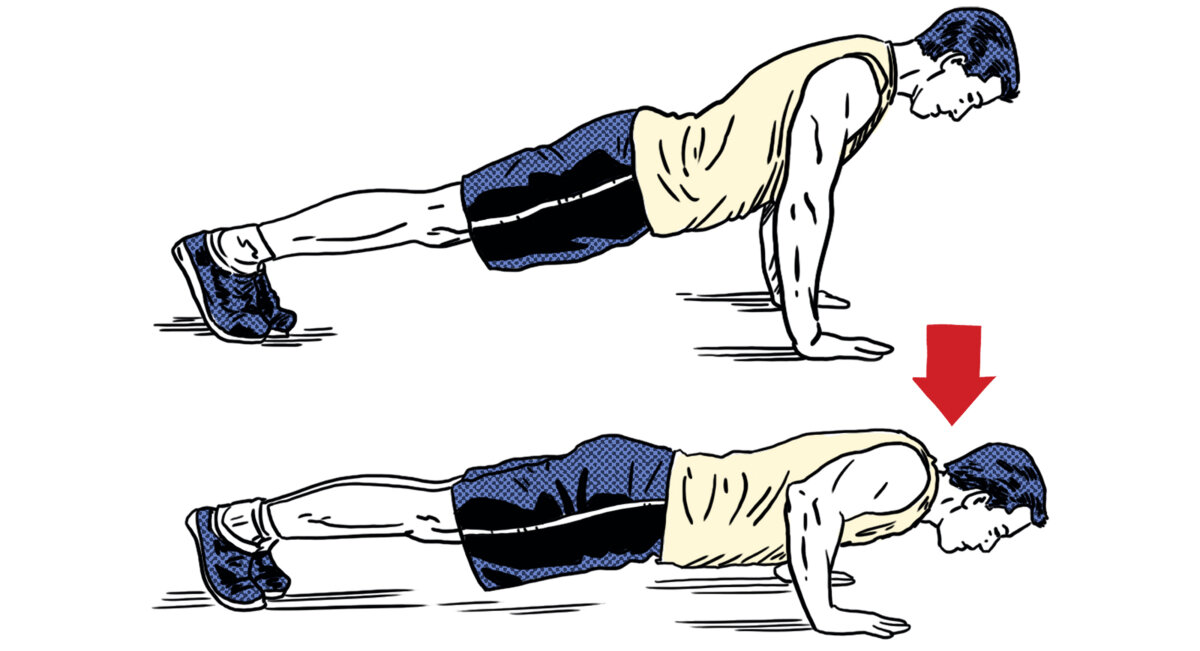
Push-up
Get into a straight-arm plank position. Keeping your body in a straight line from head to heel, lower yourself until your chest is within an inch or two of the floor. Then, push back up to a straight-arm position. You can start out by performing this same exercise from your knees, or by pushing up from a bench or countertop rather than from the floor.

Prone Back Extension
Lie on your stomach and hold a rolled towel straight in front of you. Pull the towel toward your chest and contract your lower back. This strengthens your core and lower back muscles.
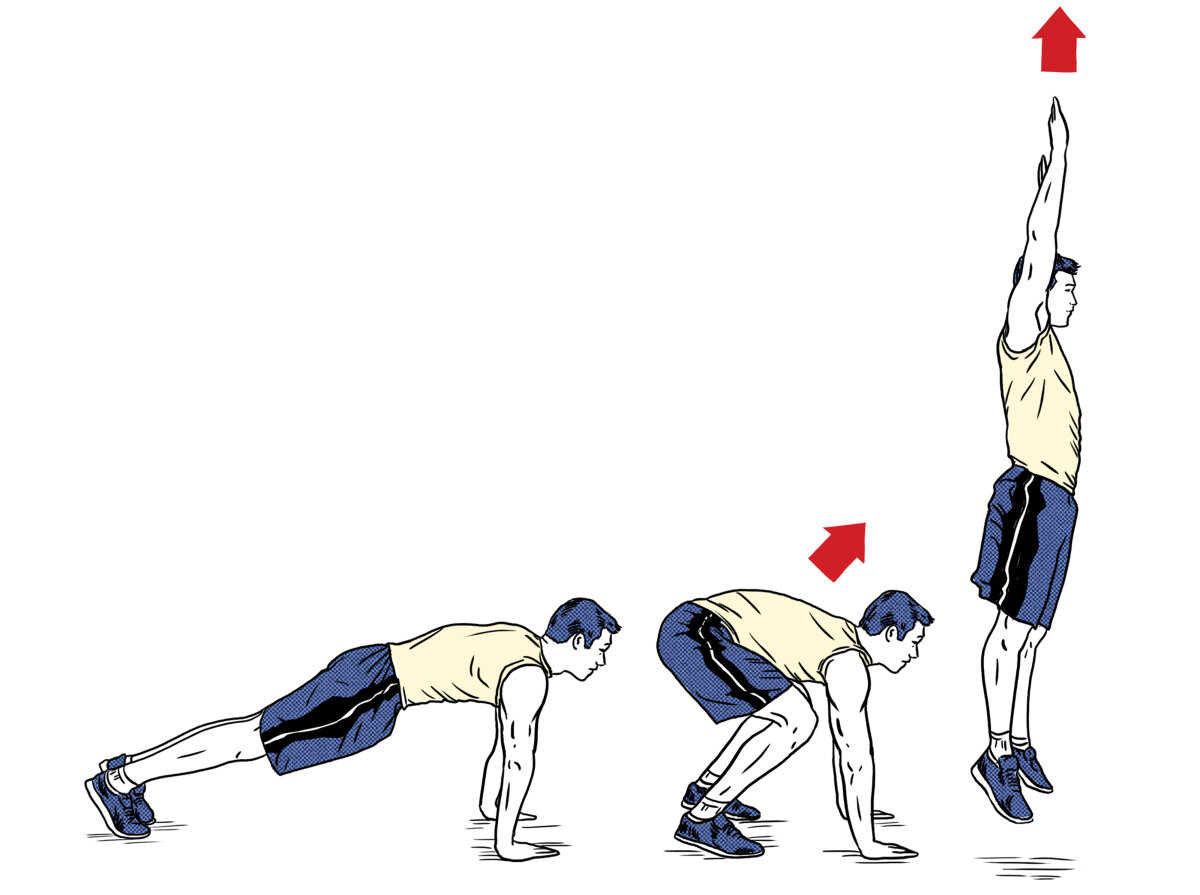
Burpee
Stand with your feet hip-width apart. Squat down and plant your hands on the floor. Then jump your feet back into a plank position, forming a straight line from head to heels. Engage your core and jump your feet back up toward your hands, then jump. You can start out by walking your feet back to plank position and forward again, rather than jumping them back and forward.

Russian Twist
Sitting on the floor with your legs in front of you, lean back slightly. Lift your feet a few inches off the floor. Extend your arms out in front of you. Keeping your core engaged, twist your upper body to the right and then to the left without lowering your feet or arching your back. You can start out by putting your heels on the ground rather than lifting them off the floor.
Other bodyweight exercises include mountain climbers and jumping jacks. Search online for more options or check out a book like Bodyweight Strength Training Anatomy, by Bret Contreras.
Focus on doing each movement properly, in a controlled manner. This will affect your neuromuscular system, and your body will respond with muscular growth. You will then be able to make your workouts even more productive by doing them more often, increasing the number of total sets you do, slowing down your movements (so your muscles are under more continuous tension), or by performing supersets (two exercises back to back) and circuits (combinations of exercises).
Bodyweight training can be done anywhere: at home, in a hotel room, on a lunch break, etc. It burns a lot of calories, strengthens you for everyday movements, and lowers the odds of dying from cardiac problems by 41 percent and dying from cancer by 19 percent. The Journal of Aging and Health reported that seniors who did strength training at least twice per week increased overall strength by 113 percent.
Bodyweight exercises are easy to start and maintain, simple to modify until you get strong enough to do without modifications, and simple to build on once you’re strong. They are challenging and stimulating, they yield noticeable results, and they strengthen and stabilize muscles, ligaments and tendons to mitigate and prevent injury.
Here’s a challenge you can do: Start a habit of exercising three days per week. Pick six of these movements and do 10 repetitions (reps) of each: See how many you can get through in 30 minutes. Modify them as described above if you need to. After a day or a week of getting comfortable with these movements, try a different mix of movements, extend your time to 45 minutes, or add one or two reps to each movement.
What better way to spend 30 minutes, three times per week? You can do bodyweight exercises. Start the habit today!
